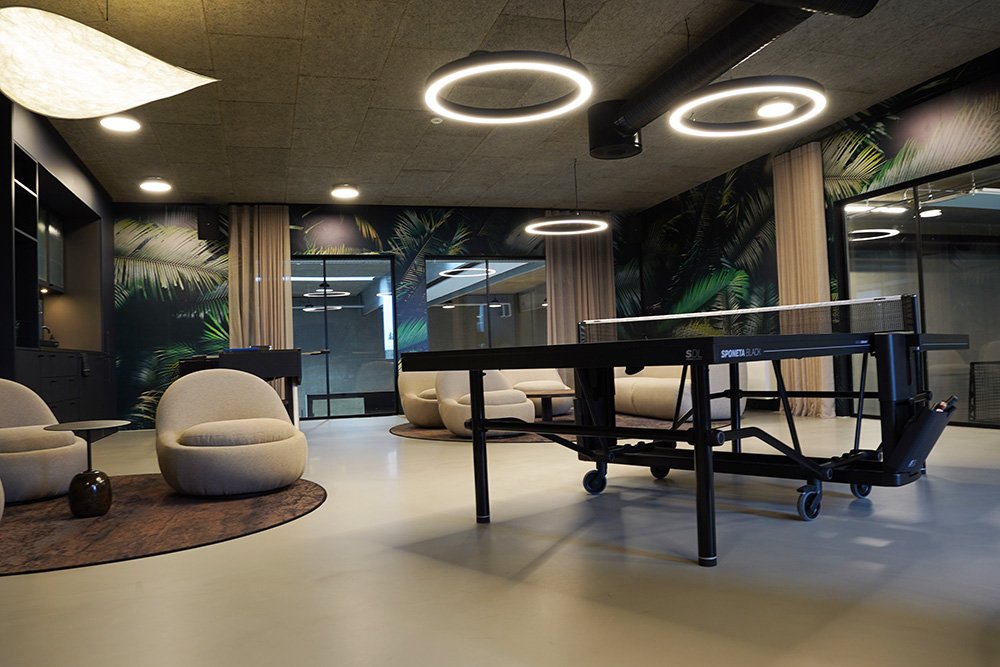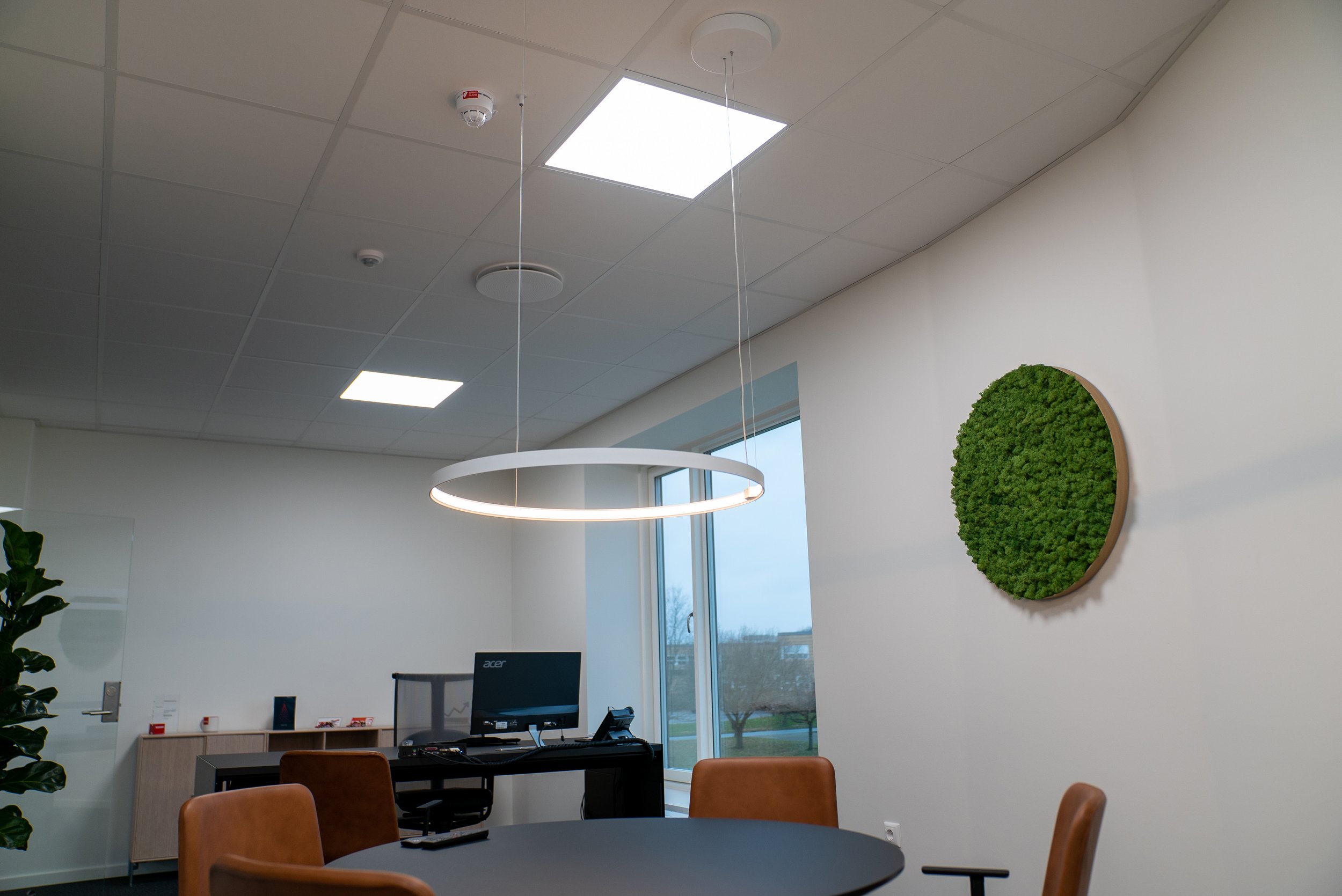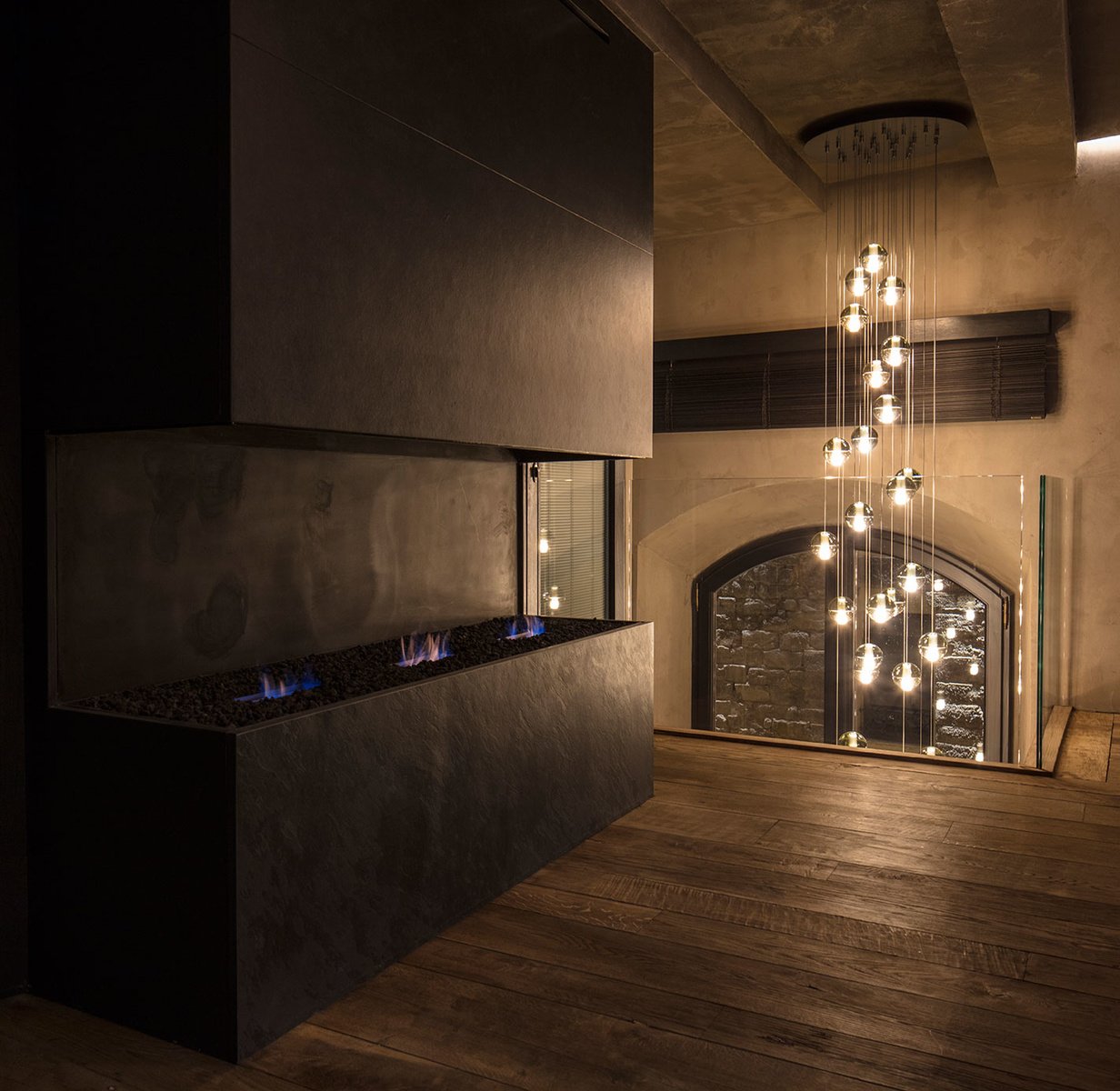Guide: The right lighting for open-plan offices
Are you in the process of designing a new open-plan office or need to spice up your existing interior with new lighting? Then read on. In this blog post, we'll guide you to the best possible office lighting for open-plan offices and give you professional advice on how to optimize working conditions with the right lighting.
They are becoming more and more popular. Open plan offices are a hit with many businesses across the country, but due to poor or incorrect lighting, it's not always the most effective solution. In this blog, we focus on how you can use LED to optimize your open office by creating different environments for different tasks.
How should the office be lit?
An open-plan office can be designed in any number of ways, so it's impossible to give a definitive answer on how to light your office. There are many things to consider, from the amount of daylight versus artificial lighting to how close employees sit to the windows. In addition, you should consider how much the furniture shields the daylight and whether the light can be varied as needed.
Lighting is often an overlooked topic when it comes to open plan office design, but why? Research shows that the right lighting can contribute to happier and more productive employees. Many open-plan offices are illuminated with uniform task lighting in all areas of the space. However, this can be monotonous and boring for employees, so the challenge is to use lighting to create different working environments.
Zone your office
Many workplaces use room dividers or dedicated workstations, where employees have a small screened-off space in an open office environment. However, there are other solutions that are worth considering when dividing up the office.
A good and effective way to divide the open office is through lighting. Some zones have greater lighting requirements than others. For example, more light is required at the desk than at the sofa arrangement. This is because lighting with a high lux value and color temperature at the high end of the scale can help increase productivity, whereas dim lighting is better suited to zones where employees are social.
Choose LED lighting
The list of benefits of LED versus conventional lighting is long, which is why you can benefit from integrating LED in your office.
Compared to traditional fluorescent tubes, which are the typical lighting solution in many offices, LEDs have a significantly higher quality of light without flickering. In addition, LEDs emit more light for the same amount of power, and LED luminaires are virtually maintenance-free, with an average lifespan five times longer than fluorescent tubes.
This means that LED lighting can increase productivity in the workplace while saving you money on your electricity bill. So why not replace your conventional lighting with LED?
At Lumega, we provide a wide range of lighting solutions for offices in Denmark and abroad. Contact us today to learn more about LED office lighting.



